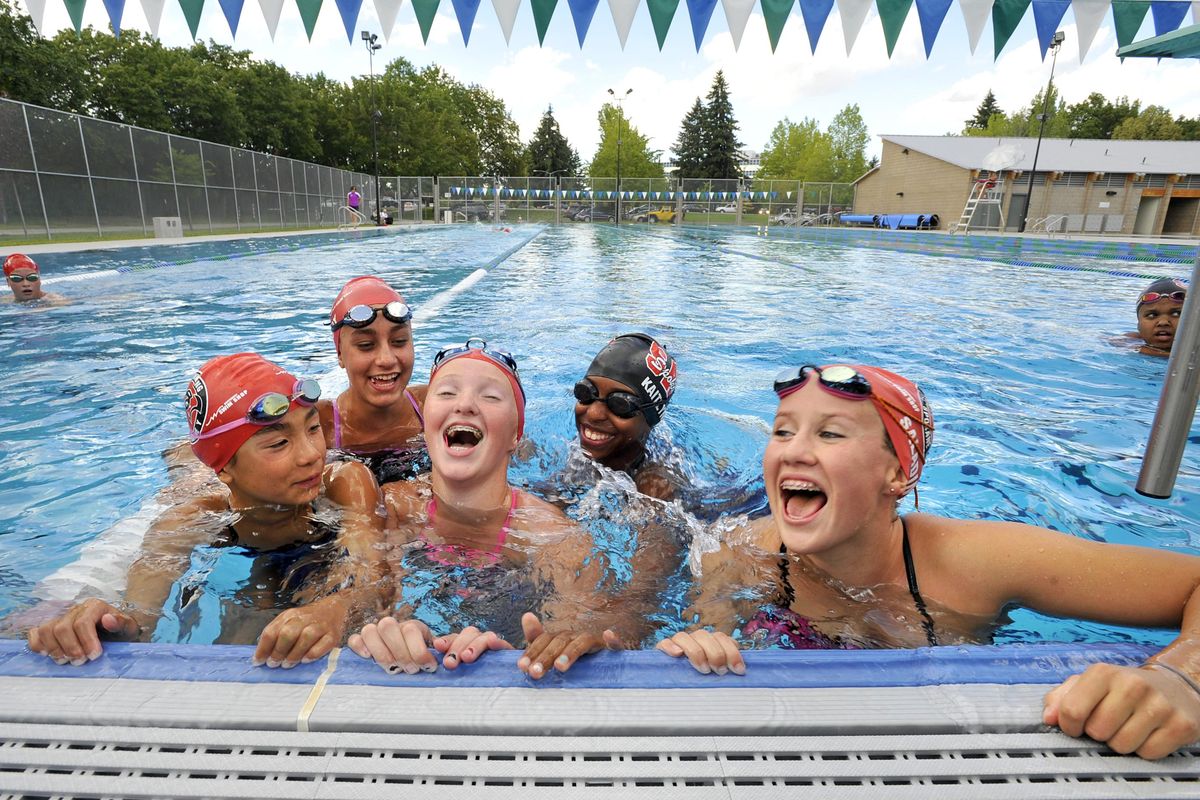Swimmers hope to cover Spokane’s Witter Pool for year-round use

On the last day of swimming at Witter Pool earlier this month, dozens of people turned out, arms flashing and feet fluttering, as they swam laps in the 50-meter pool.
As the largest public pool in the region, Witter has always been popular with swimmers, swim teams and other groups. They are among those now exploring how to cover the pool so it can be used around the year.
“We know, physically, it can be done,” said Carl Strong, assistant director of recreation for the city of Spokane. “It’s a huge endeavor.”
Strong said pools usually open when school gets out and close at the end of the summer, but he has been opening Witter Pool, on the edge of Mission Park, for preseason and postseason swimming the last few years. And the crowds have responded.
“The swimming community would love to have more,” Strong said.
Spokane used to have a covered, year-round pool at Shadle Park, but the aging facility was ripped out in 2007. There are indoor pools at exercise facilities around town, but they require paid membership to use.
A group of people involved in the swimming community has been meeting to look at covering Witter Pool. They have to get an idea of what the building would look like, how it would operate and how much it would cost.
Heating and ventilation costs have to be considered, Strong said, as does the cost of year-round staffing. The city’s pools already do not bring in enough money to break even and are subsidized heavily by the Parks Department, he said.
There’s no doubt a covered pool would be well used, Strong said. Swim teams are always popular and almost always fill to capacity.
“These are all things that tell me people would use it,” he said. “I think we could offer new programs. Our existing programs could expand.”
The key is the funding. Early estimates to enclose Witter run from $4 million to $6 million. That doesn’t include increased costs for staffing and operation. Asking voters to pass a bond measure is unlikely because a large bond was just passed for a major overhaul of Riverfront Park, Strong said.
The money likely would have to come from fundraisers, donations or grants, he said.
“The department has zero to give,” Strong said.
But, he added, “The Park Board is definitely willing to listen.”
Despite the financial hurdles, Strong is optimistic the project can happen.
“Community support for it will certainly help,” he said. “If the public wants something in parks, they need to speak to the Park Board.”